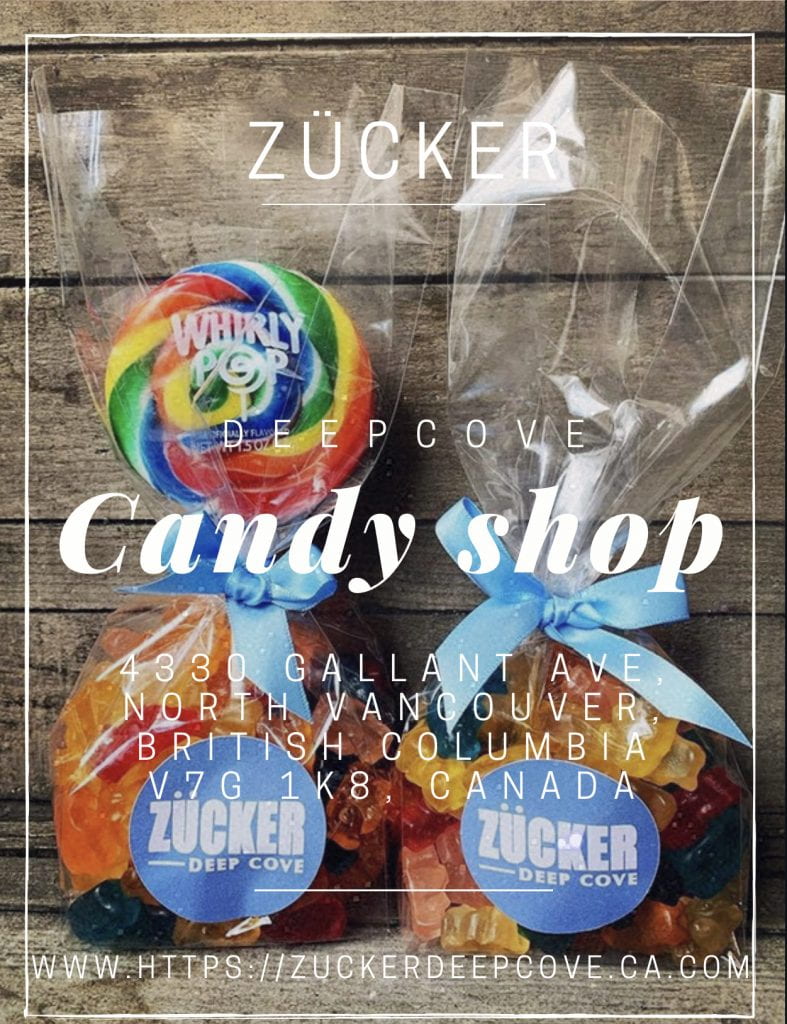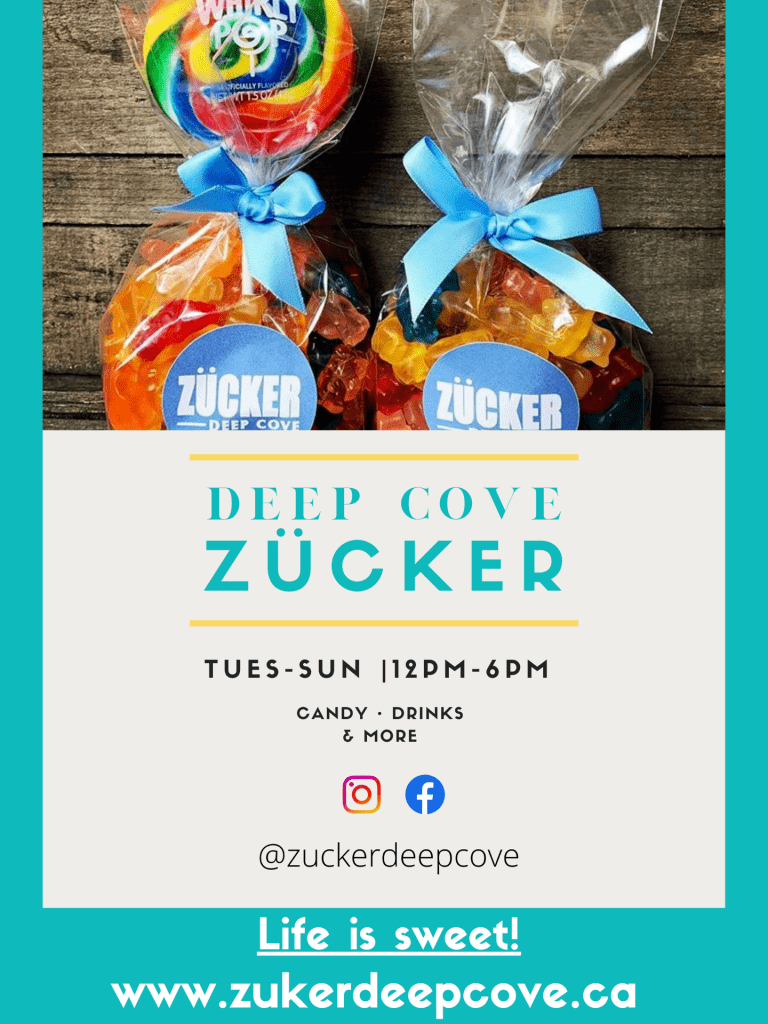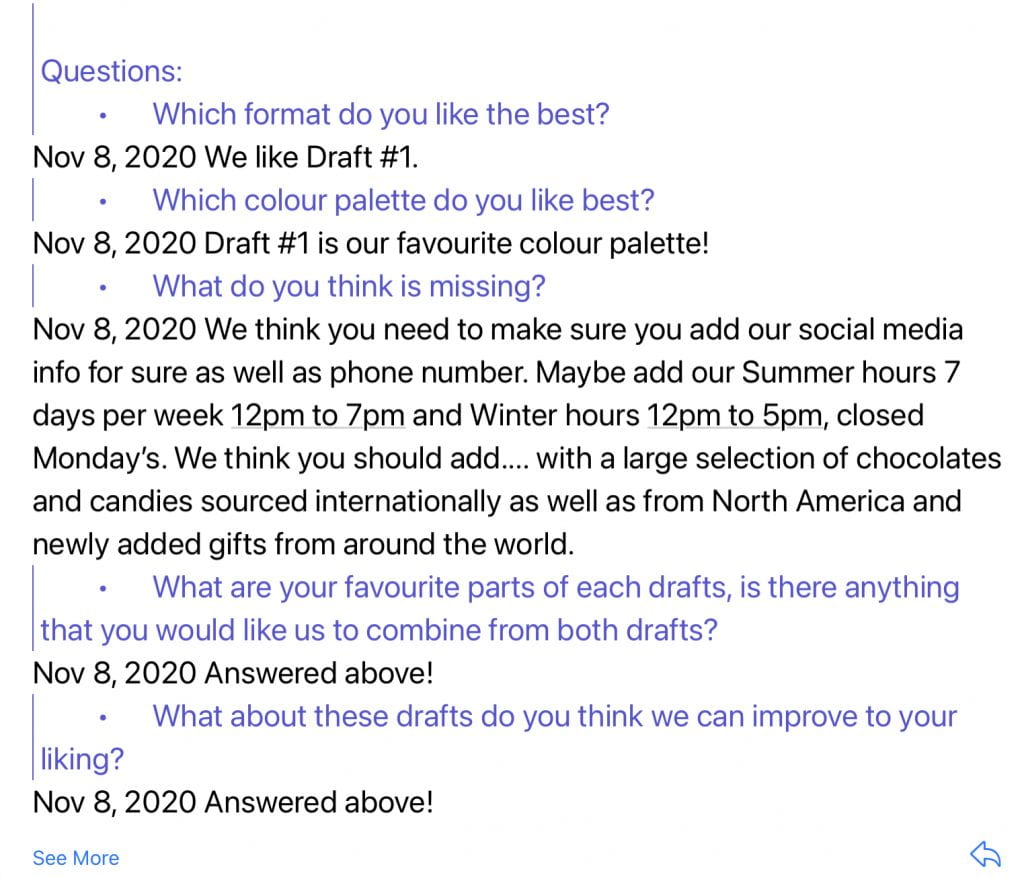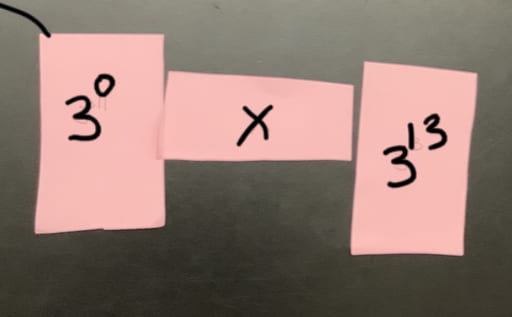Launch
This project was all about advertising, for the first part of this project in groups we chose a business that we would design an advertisement for. Which my group we chose a candy shop called Zücker,
Our second step was to created a script to call them and ask if they would like to work with us, then we made the call, next we learned how to make a mood board to plan what we wanted our advertisement to look like.
With the mood boards we made some individual advertisement drafts.
Our mood bord⬇️

We combined our individual drafts and turned them into one group draft. Then we sent the 2 drafts to the business for their feedback and to see which draft they liked best.
My individual draft⬇️

Group draft #1 ⬇️

Group draft #2⬇️

Their feed back⬇️

When we received feedback from our business we made a few changes.
We made some changes ⬇️

Then we got peer critiques on or revised draft, after that we had someone who works in advertising come in and give us some critiques.

We made some final changes then we sent our drafts to the business and we where done.
Final draft⬇️

building knowledge
In the building knowledge step we learned the different types of media and the message. We learned about different types of media and what goes in to media such as, mass media, consumer, target audience, and advertising. I found learning about the target audience interesting learning how brands design their ad to appeal to a certain audience.
how dose what we hear, read and see influence us?
The driving question for this unit was “how dose what we hear read and see influence us?” Throughout this unit we read many texts and had many discussions about the driving question. We learned a lot about what techniques advertisers use to influence the consumer. Like we learned about pathos: the appeal of sadness and emotions, for example a SPCA ad with a sad chained up dog, Ethos: the appeal of ethics, for example and ad for a cough drop that says it’s doctor recommended, and Logos the appeal of logic such as an ad that has facts, proof and evidence. I find that the appeal of Pathos is very strong in my experience. This question is all about how brands advertise product so people think if you by this you will fit in or be cool.
Evidence of Your Learning
Through out this project we learned about advertising, the different techniques and appeals, meaning of media and message, graphic design skills, how to analyze text, team skills. I completed many advertisement drafts, advertisement survey, photo journal and the final advertisement project. I participated in group work and class decisions which shows evidence of my understanding of media.
Curricular Competencies
In milestone 1 I demonstrated that I can comprehend text by learning about the proposed of advertising and other aspects of advertising such as, the target audience, the main objective and the main idea. For milestone 1 we watched an Apple ad for their new Home Pod. After we wrote a paragraph about who we think the target audience is and dose
Milestone 5 I have applied a variety of strategies to comprehend text. We read the novel The Gospel According to Larry and we also read Medium is The Message by McLuhan. One quote that stood out while reading Medium is The Message was “we shape our tools, and thereafter our tools shape us”, when I first this I didn’t fully understand the meaning of it but I used some strategies to help comprehend it. Some of the strategies I used where discussing it with my table group, re-reading the text and discussing it with my class room.
Milestone 6 I demonstrated writing and design processes to plan, develop, create my advertisement. I utilized my critiques, from my peers to improve my advertisement draft Milestone 6 was when our group combined all our individual drafts together into one final draft.
At first we had to chose business that we wanted to work with my group chose a candy shop called Zücker, we created a script to call them, then we made the call, next we learned how to make a mood board for our advertisement, we made individual advertisement drafts then turned them into one group draft. Then we sent the 2 drafts to the business for their feedback and to see which draft they liked best.8
I’m so happy with how our post turns out thank you Dana, Patrick, Aaron, Xander and Julian for being a great group.
Continue reading →



































